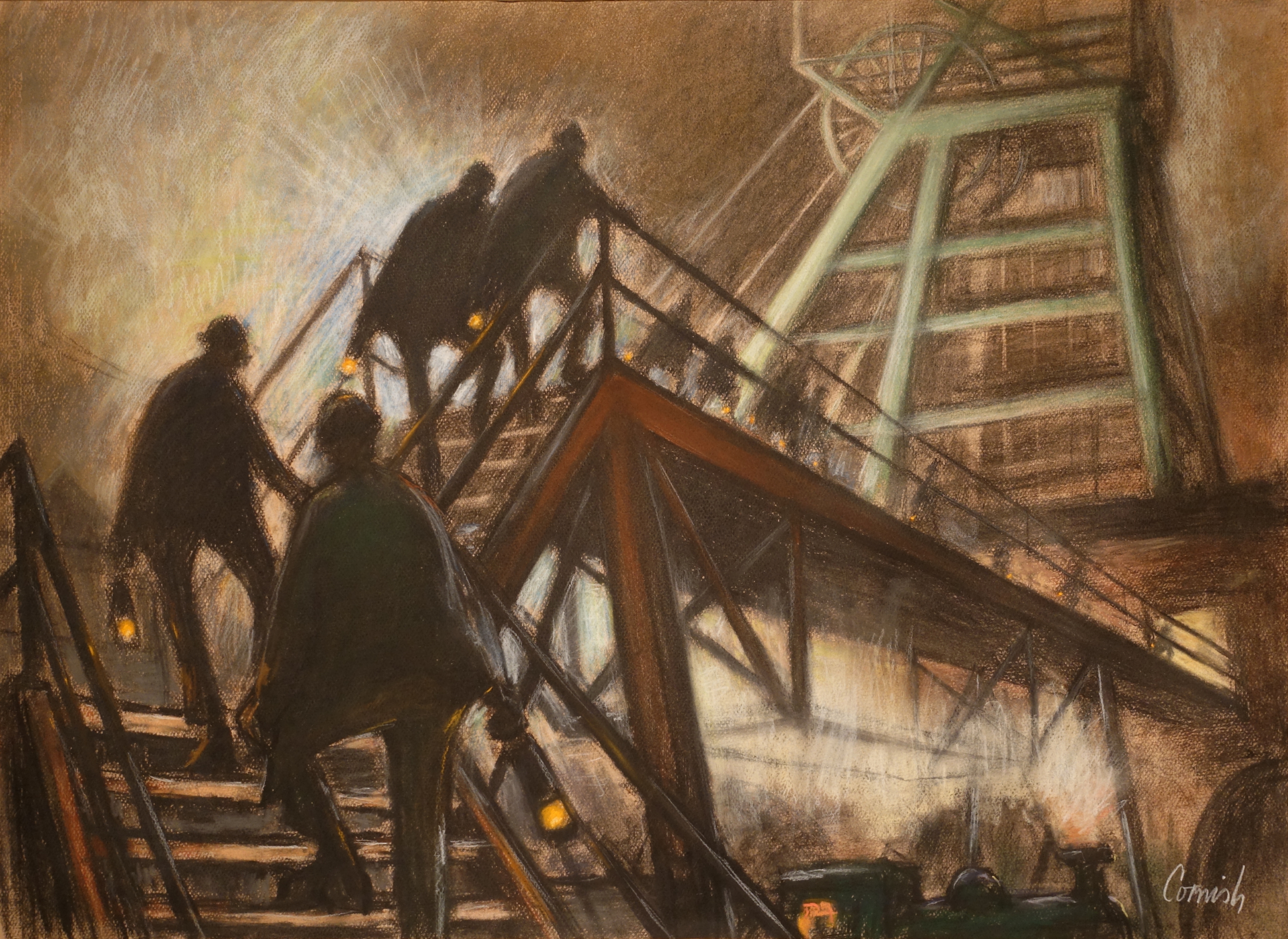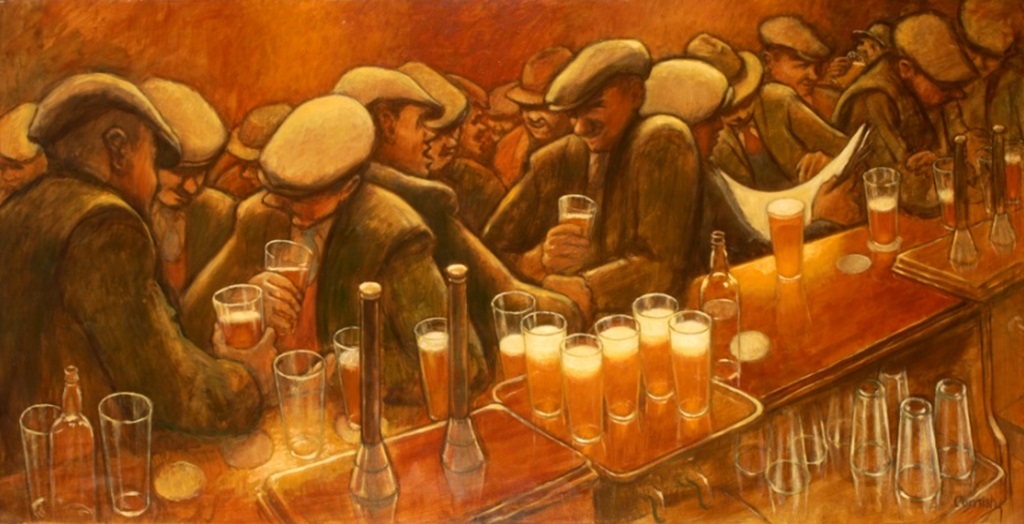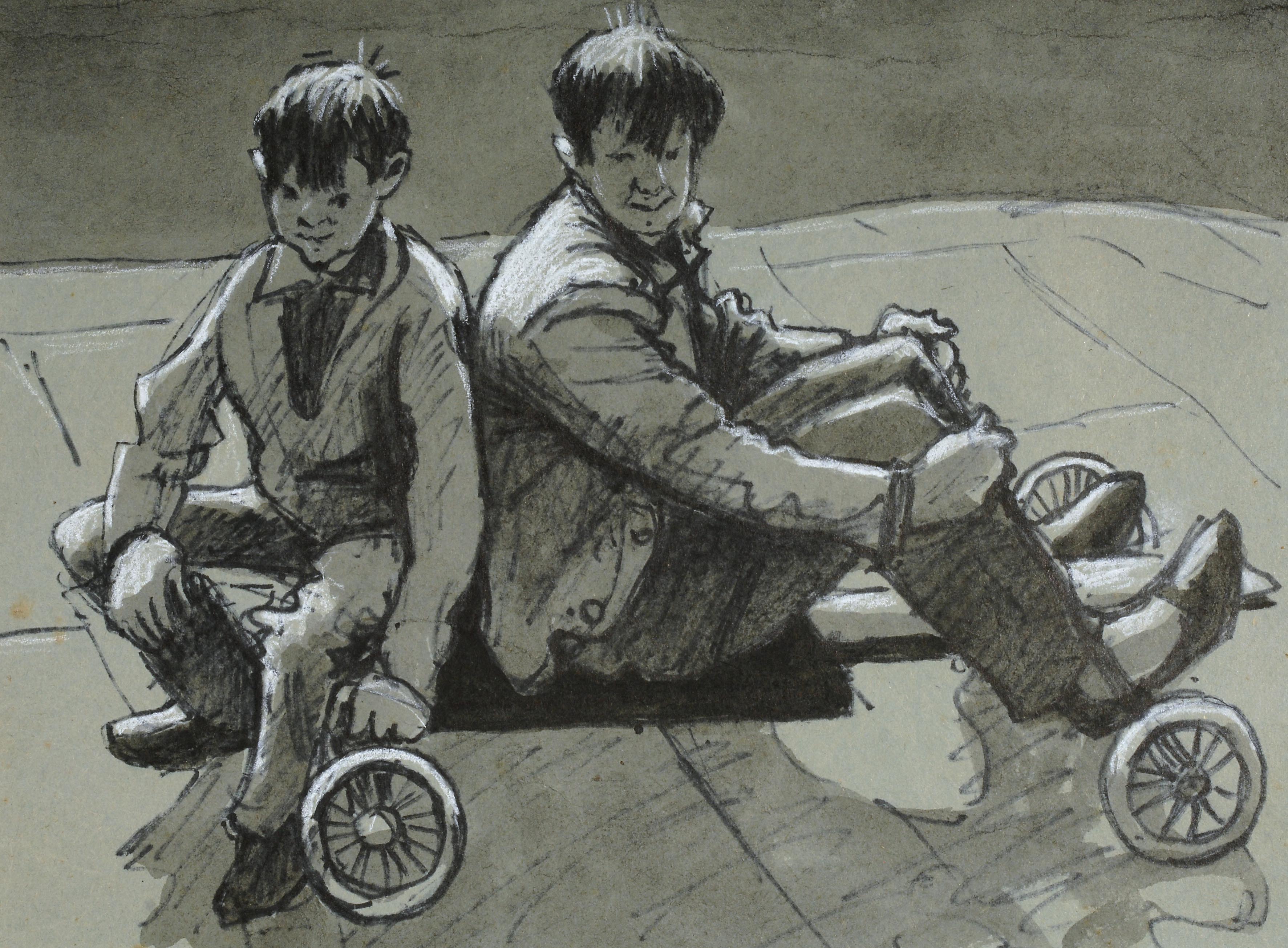The first major retrospective exhibition of work by the North East artist Norman Cornish is due to take place at The Bowes Museum at Barnard Castle in County Durham. This event will celebrate the centenary of the acclaimed artist’s work and opens almost 100 years to the day of his birth in Spennymoor. Here, the curator Dr Howard Coutts writes about the exhibition for Northern Soul.
Norman Cornish’s work has an affinity with The Bowes Museum. Our founder, John Bowes, had mining interests and it’s not the first time that we’ve held an exhibition reflecting that. In 2014 we held Shafts of Light: Mining Art in the Great Northern Coalfield which featured works by Cornish, among others. The guest curators of that exhibition were Robert McManners and Gillian Wales who wrote a book of the same name and who were also Cornish’s biographers.
Many of the scenes in Norman Cornish: The Definitive Collection will be familiar to visitors, others not, but one thing that they all have in common is that they represent a snapshot in time by their biographical nature. Not written poetry but visual poetry, of course. The poetry of soot and grime, of lives spent underground in ceaseless toil, of careworn faces going to and from work before the sun has risen or after it has set. But there are some other, less bleak, aspects to it: a sense of community and continuity, of hard labour rewarded with family and friends.
Cornish found poetry in the details – of a church on a hill, a school set as a backdrop to daily life, of a coal wagon travelling across an arch framed by a vista of terrace houses like some grand 18th century architectural scheme. He was born into this community but came across modern art in his teens and found no need to venture much beyond his local town to express his interests and abilities. Despite showing great academic promise, difficult economic circumstances dictated that, aged 14, he was obliged to begin life as a miner – a career which was to span four decades. At about the same age, his artistic ability found fulfilment and a means to progress when he joined the Sketching Club at the inspirational Spennymoor Settlement, otherwise known as the Pitman’s Academy. The warden, Bill Farrell, advised the young boy to “paint what you know”. That advice proved pivotal. His inspiration came from the world he knew – his own “slice of life”.
The themes incorporated within Cornish’s work reflect the core features of mining communities – the pit, the pub and the sociability of street life providing a hive of activity and ample subject matter including the chip van, horse-drawn carts, miners relaxing in the pub, women in wrap-around pinnies gossiping in the back lane, and children playing together in the streets.
At the age of 45, he escaped the pits and was able to follow his true vocation as an artist. By now, he was nationally and internationally acclaimed and undertook a number of schemes for local institutions and authorities, some of which will be on show in the exhibition including a series of drawings for the British Oxygen Plant in Birtley, a picture for the ‘Roll-on, Roll-off’ facility at North Shields for the Port of Tyne Authority, as well as a view of the The River Pageant for the boardroom of the same authority. Also, in 1966, a visit to Paris sponsored by Tyne Tees Television gave him a chance to see the French paintings he so loved. Though the visit was productive and enjoyable, Cornish felt that his hometown had “all that an artist needs in order to depict humanity” and he seldom deviated from images of town and community, family and friends, that were part of his upbringing and personality.
It is his skill in narrative that will be celebrated in Norman Cornish: The Definitive Collection, from November 16, 2019 until January 5, 2020. For more information, click here.









